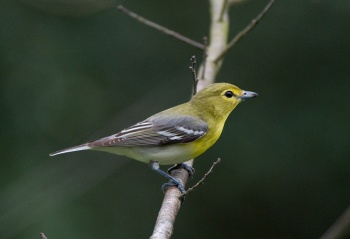Surely in vain the net is spread in the sight of any bird. (Proverbs 1:17 KJV)
CLASS – AVES, Order – PASSERIFORMES, Family – Vireonidae – Vireos, Greenlets
*
Latest I.O.C. Version
Species (64)
Rufous-browed Peppershrike (Cyclarhis gujanensis)
Black-billed Peppershrike (Cyclarhis nigrirostris)
Chestnut-sided Shrike-Vireo (Vireolanius melitophrys)
Green Shrike-Vireo (Vireolanius pulchellus)
Yellow-browed Shrike-Vireo (Vireolanius eximius)
Slaty-capped Shrike-Vireo (Vireolanius leucotis)
Slaty Vireo (Vireo brevipennis)
White-eyed Vireo (Vireo griseus)
Thick-billed Vireo (Vireo crassirostris)
Mangrove Vireo (Vireo pallens)
Providencia Vireo (Vireo approximans)
Cozumel Vireo (Vireo bairdi)
San Andres Vireo (Vireo caribaeus)
Jamaican Vireo (Vireo modestus)
Cuban Vireo (Vireo gundlachii)
Puerto Rican Vireo (Vireo latimeri)
Flat-billed Vireo (Vireo nanus)
Bell’s Vireo (Vireo bellii)
Black-capped Vireo (Vireo atricapilla)
Dwarf Vireo (Vireo nelsoni)
Grey Vireo (Vireo vicinior)
Blue Mountain Vireo (Vireo osburni)
Yellow-throated Vireo (Vireo flavifrons)
Plumbeous Vireo (Vireo plumbeus)
Cassin’s Vireo (Vireo cassinii)
Blue-headed Vireo (Vireo solitarius)
Yellow-winged Vireo (Vireo carmioli)
Choco Vireo (Vireo masteri)
Tepui Vireo (Vireo sclateri)
Hutton’s Vireo (Vireo huttoni)
Golden Vireo (Vireo hypochryseus)
Warbling Vireo (Vireo gilvus)
Brown-capped Vireo (Vireo leucophrys)
Philadelphia Vireo (Vireo philadelphicus)
Red-eyed Vireo (Vireo olivaceus)
Chivi Vireo (Vireo chivi)
Noronha Vireo (Vireo gracilirostris)
Yellow-green Vireo (Vireo flavoviridis)
Black-whiskered Vireo (Vireo altiloquus)
Yucatan Vireo (Vireo magister)
Rufous-crowned Greenlet (Hylophilus poicilotis)
Grey-eyed Greenlet (Hylophilus amaurocephalus)
Lemon-chested Greenlet (Hylophilus thoracicus)
Grey-chested Greenlet (Hylophilus semicinereus)
Ashy-headed Greenlet (Hylophilus pectoralis)
Brown-headed Greenlet (Hylophilus brunneiceps)
Rufous-naped Greenlet (Hylophilus semibrunneus)
Golden-fronted Greenlet (Hylophilus aurantiifrons)
Dusky-capped Greenlet (Hylophilus hypoxanthus)
Buff-cheeked Greenlet (Hylophilus muscicapinus)
Scrub Greenlet (Hylophilus flavipes)
Olivaceous Greenlet (Hylophilus olivaceus)
Tawny-crowned Greenlet (Hylophilus ochraceiceps)
Lesser Greenlet (Hylophilus decurtatus)
White-bellied Erpornis (Erpornis zantholeuca)
Black-headed Shrike-babbler (Pteruthius rufiventer)
Pied Shrike-babbler (Pteruthius flaviscapis)
Himalayan Shrike-babbler (Pteruthius ripleyi)
Blyth’s Shrike-babbler (Pteruthius aeralatus)
Dalat Shrike-babbler (Pteruthius annamensis)
Green Shrike-babbler (Pteruthius xanthochlorus)
Black-eared Shrike-babbler (Pteruthius melanotis)
Trilling Shrike-babbler (Pteruthius aenobarbus)
Clicking Shrike-babbler (Pteruthius intermedius)
*
On the photos or slides, a “by” indicates one of the photographers or videographers, who have given their permission, with links on our sidebar. Please visit their site to see many more fantastic shots, a “©©” copyright symbol indicates a photo from Creative Commons and ©WikiC is a Creative Commons photo from Wikipedia.
Photographers or Videographers used on this page from our sidebar, Photography, are:
©Arthur Grosset’s Birds
BirdPhotos
Dave’s BirdingPix
Ian Montgomery’s Birdway
Keith Blomerley – Videographer
Kent Nickell
Ray’s Wildlife Photography
Back to Family Page – CLICK HERE
Articles Mentioning Birds From This Family:
- Birds Vol 1 #6 – The Yellow-throated Vireo
- The Red-eyed Vireo – The Persistent Singer… by ajmithra
- They’re Back – First White-eyed Vireo spotted
- Vol. 2, No. 3 – How The Birds Secured Their Rights
- Birds Vol 2 #1 – Bird Song~July
- Birdwatching in Polk County – December 2009
- Small Fire Department Rescues Birds
- Sunday Inspiration – Shrikes and Vireos
Other Websites that have photos of this Family:
- Vireos and Allies – Ian’s Birdway
- Vireos (Vireonidae) – IBC
- Vireo – Wikipedia
- Family : Vireonidae – Le quide ornitho
*
The vireos are a group of small to medium-sized passerine birds (mostly) restricted to the New World. They are typically dull-plumaged and greenish in color, the smaller species resembling wood warblers apart from their heavier bills. They range in size from the Choco Vireo, Dwarf Vireo and Lesser Greenlet, all at around 10 centimeters and 8 grams, to the peppershrikes and shrike-vireos at up to 17 centimeters and 40 grams.
The four genera of these birds make up the family Vireonidae, and are believed to be related to the crow-like birds in family Corvidae and the shrikes in family Laniidae. Recent biochemical studies have identified two babbler genera (Pteruthius and Erpornis) which may be Old World members of this family (Reddy & Cracraft 2007). Observers have commented on the vireo-like behaviour of the Pteruthius shrike-babblers, but apparently no-one suspected the biogeographically unlikely possibility of vireo relatives in Asia.
All members of the family eat some fruit but mostly insects and other arthropods. They take prey from leaves and branches; true vireos also flycatch, and the Gray Vireo takes 5 percent of its prey from the ground.
Most species are found in Middle America and northern South America. Thirteen species of true vireos occur farther north, in the United States and Canada; of these all but Hutton’s Vireo are migratory. Members of the family seldom fly long distances except in migration (Salaman & Barlow 2003). They inhabit forest environments, with different species preferring forest canopies, undergrowth, or mangrove swamps.
Males of most species are persistent singers. Songs are usually rather simple, monotonous in some species of the Caribbean littoral and islands, and most elaborate and pleasant to human ears in the Chocó Vireo and the peppershrikes.
The nests of many tropical species are unknown. Of those that are known, all build a cup-shaped nest that hangs from branches. The female does most of the incubation, spelled by the male except in the Red-eyed Vireo complex.
(Information take from Wikipedia – Vireo
Some of the Family – Photos are Alphabetical down the columns:























